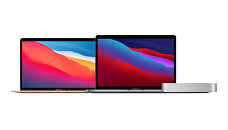
Intel shares remain under pressure one day after reporting disappointing Q3 results
https://finance.yahoo.com/video/inte...190604909.html
Sat, October 24, 2020, 2:59 AM GMT+7
Shares of Intel fell 10% on Friday, a day after reporting disappointing third-quarter results. Jared Blikre breaks down the stock's price action, and discusses what the state of chipmaker means for the rest of the industry.
ข่าว official ออก แล้วจ๊ะ ร่วมๆ 11% และผล Q4 ยังลดลงต่อเนื่อง ถึงจะขาย แผนก SSD ออกไปแล้ว
ดันเสือขี้เรื้อนเข้าตลาด ผลก็ยังเหมือนเดิม แนวโน้มลงไป 45 หรือ เฉียดๆ 40 เอาง่ายๆ ขนาดนั่นคุยว่า NEW Architecture เลยนะ
GEN-11 คงไม่ต่างกันเท่าไหร่ แค่ FUSE AVX-512 มันของเล่น มันถึงตื๊บ RYZEN 4000U ไม่ลงในผลเทสที่ออกมาก่อนนี้ไง XE เองก็แนวโน้มแป๊กสูงมาก
INTEL LEAP TO DISRUPT AHEAD













 ลุงราจาสบายดีไหม
ลุงราจาสบายดีไหม





Comment